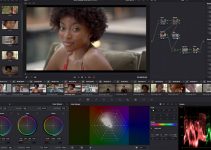Among the most time consuming aspects of video editing is the export. It’s also just dead time since you generally can’t use the computer or perform other edits while it happens since it takes up as much computing power as possible.
Premiere Pro has another unique issue by default that seems to limit exports to only use the CPU. This means that Adobe isn’t even using the full power of your machine.
Filmmaker Armando Ferreira is here to tell us about how a recent update to Premiere allows users to get dramatically faster exports thanks to a fun new NVIDIA technology. You will need a compatible GTX or RTX series GPU, but the differences between NVIDIA’s encoding, called NVENC, and standard Premiere is a game changer.
By taking advantage of NVIDIA’s NVENC tech, Premiere can use GPU acceleration to speed up the export process for H.264 and H.265 files.
GPU acceleration isn’t new to Premiere, you can use it with the Mercury Playback Engine for decoding video as you work on the timeline. This means much better, smoother playback as you work.
Now, you can use the GPU to speed up your exports. Ferreira’s first test was just a straight-up 10 minute 4K video without any effects or graphics. Without NVENC enabled, the export finished in 7 minutes 22 seconds.
Not terrible, a bit faster than realtime on this machine. However, with NVENC turned on it finished in just 2 minutes 25 seconds. That is incredible. Or as Ferreira put it, an over 200% improvement.
Next up was a real-world test. Taking a 12-minute clip with mixed footage, color grading, and some effects Adobe Premiere was able to finish without NVENC in 9 minutes 50 seconds.
With NVENC enabled that is shorted down to 6 minutes 5 seconds. So, even with actual editing and effects this will deliver much faster exports.
How can you push this even further? Well, Ferreira found a way to use Canon C500 6K raw footage, Blackmagic Pocket Cinema Camera 6K 3:1 raw footage, EOS R 4K clips, mixed frame rates, layers of color grades, and more in a 13 minute project. This is essentially “worst case scenario.”
Still, NVENC delivered a 20% improvement over stock Premiere exports. The standard method completed the task in 25 minutes 26 seconds while NVENC dropped it down to 21 minutes 1 second. Always going to be worthwhile to make sure you are running NVENC if you can.
If you want to do this Ferreira walks us through the settings you need to access to get setup. First, just a reminder that this will only work with NVIDIA’s GTX and RTX graphics cards.
Once you have that, go to File > Project Settings > General. Here you will want to set the Renderer is set to Mercury Playback Engine GPU Acceleration (CUDA).
After that, head to Edit > Preferences > Media. In this menu you’ll want to make sure “Enable hardware accelerated encoding and decoding” is checked on. You might need to restart to actually get it working now.
For the actual export, head to File > Export > Media. In the export settings Ferreira recommends H.264 and then the “Match Source – High bitrate” preset.
Scrolling down through the encoding settings should reveal an option for hardware encoding instead of software encoding. As long as that is set, change the profile to High and the Level to 5.1. That should give you similar results to this video.
This is great, especially considering many custom builds already are using compatible NVIDIA GPUs. I would love to see how this impacts H.265 exports, though. Highly recommend going and checking your settings right now.
[source: Armando Ferreira]
Disclaimer: As an Amazon Associate partner and participant in B&H and Adorama Affiliate programmes, we earn a small comission from each purchase made through the affiliate links listed above at no additional cost to you.


